Showing Spotlights 353 - 360 of 2839 in category All (newest first):
 Researchers have designed a self-powered, 'one-terminal' tactile sensor that can distinguish various motions on a single electrode. They did this by using a thermoplastic polymer that can easily change the electrostatic signal in a selective area. The sensor array can perceive the position and the sequence of touches, shape of touching objects, and dynamic motions (sliding, rolling) of an object and can distinguish various motions on a single electrode.
Researchers have designed a self-powered, 'one-terminal' tactile sensor that can distinguish various motions on a single electrode. They did this by using a thermoplastic polymer that can easily change the electrostatic signal in a selective area. The sensor array can perceive the position and the sequence of touches, shape of touching objects, and dynamic motions (sliding, rolling) of an object and can distinguish various motions on a single electrode.
May 6th, 2022
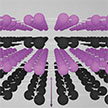 By utilizing the natural atomic thickness, flexibility, and mechanical strength, flexible devices based on 2D materials are paving the new way to achieve novel flexible device applications that include flexible transistors, flexible optoelectronics, flexible sensors and flexible supercapacitors. Furthermore, mechanical robustness and their atomic thickness provide 2D materials with high transparency in the visible range and makes them suitable for flexible, transparent electronic devices that are subject to mechanical strain and cyclic stress.
By utilizing the natural atomic thickness, flexibility, and mechanical strength, flexible devices based on 2D materials are paving the new way to achieve novel flexible device applications that include flexible transistors, flexible optoelectronics, flexible sensors and flexible supercapacitors. Furthermore, mechanical robustness and their atomic thickness provide 2D materials with high transparency in the visible range and makes them suitable for flexible, transparent electronic devices that are subject to mechanical strain and cyclic stress.
May 5th, 2022
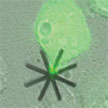 The mechanical properties of cells and their intracellular mechanical loads are as relevant for a cell's accurate functioning as the biochemical portion of the cell. This offers a novel perspective that addresses the study of cell mechanics and even the alteration of the mechanical equilibrium of the cells by using silicon chips as an intracellular intervention mechanism. These 'echanical drugs' open the possibility to determine and measure intracellular forces and internalization routes. They can also produce intracellular mechanical perturbations by altering the cell cycle and even, if they are designed accordingly, destroy the cells.
The mechanical properties of cells and their intracellular mechanical loads are as relevant for a cell's accurate functioning as the biochemical portion of the cell. This offers a novel perspective that addresses the study of cell mechanics and even the alteration of the mechanical equilibrium of the cells by using silicon chips as an intracellular intervention mechanism. These 'echanical drugs' open the possibility to determine and measure intracellular forces and internalization routes. They can also produce intracellular mechanical perturbations by altering the cell cycle and even, if they are designed accordingly, destroy the cells.
May 2nd, 2022
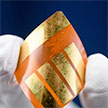 Organic and perovskite solar cells are very promising energy harvester for indoor Internet-of-Things (IoT) applications as the requirements that solar cells should satisfy to power IoT devices are quite different to the ones usually deemed necessary for application in outdoor-placed solar panels. The size of the single solar cell used in IoT applications is much smaller, and in combination with the lower power input available in low-light indoor settings as well as the emission spectra of light sources other than the sun, renders the need for high conversion efficiency paramount.
Organic and perovskite solar cells are very promising energy harvester for indoor Internet-of-Things (IoT) applications as the requirements that solar cells should satisfy to power IoT devices are quite different to the ones usually deemed necessary for application in outdoor-placed solar panels. The size of the single solar cell used in IoT applications is much smaller, and in combination with the lower power input available in low-light indoor settings as well as the emission spectra of light sources other than the sun, renders the need for high conversion efficiency paramount.
Apr 28th, 2022
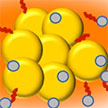 Researchers have developed a point-of-care, portable, rapid, and cost-effective test for clinical diagnosis of sodium, which uses a paper printed colorimetric sensor that is based on Curcumin-functionalized copper (CuC) nanoparticles. They demonstrate that the proposed CuC paper strip can be used for detecting Na+ concentration within the whole physiological range in both blood serum and urine. Sodium is a vitally important electrolyte present in all body fluids and it plays a crucial role in maintaining normal body function, including nerve and muscle function.
Researchers have developed a point-of-care, portable, rapid, and cost-effective test for clinical diagnosis of sodium, which uses a paper printed colorimetric sensor that is based on Curcumin-functionalized copper (CuC) nanoparticles. They demonstrate that the proposed CuC paper strip can be used for detecting Na+ concentration within the whole physiological range in both blood serum and urine. Sodium is a vitally important electrolyte present in all body fluids and it plays a crucial role in maintaining normal body function, including nerve and muscle function.
Apr 26th, 2022
 Modern sports equipment often appears to be a showcase for new material technologies and nowhere has this been more true than in global sport competitions. Some of the high-tech materials used by athletes in competitive winter sports are using nanomaterials. But, as the 2022 Beijing Winter Olympics has shown, other areas have benefited from nanotechnologies and nanoscience as well: ice skating, wearable monitoring devices, and even nanomaterial-based Braille printing of Olympic service manuals and spectator guides for vision impaired readers.
Modern sports equipment often appears to be a showcase for new material technologies and nowhere has this been more true than in global sport competitions. Some of the high-tech materials used by athletes in competitive winter sports are using nanomaterials. But, as the 2022 Beijing Winter Olympics has shown, other areas have benefited from nanotechnologies and nanoscience as well: ice skating, wearable monitoring devices, and even nanomaterial-based Braille printing of Olympic service manuals and spectator guides for vision impaired readers.
Apr 25th, 2022
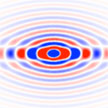 Polaritons in biaxial crystals offer a promising route to manipulate nanoscale light-matter interactions. The dynamic modulation of their dispersion is of great significance for future integrated nano-optics but remains challenging. Researchers theoretically demonstrate and experimentally verify such tailored polaritons at the interface of heterostructures. The interface engineering may shed new light on programmable polaritonics, energy transfer, and neuromorphic photonics
Polaritons in biaxial crystals offer a promising route to manipulate nanoscale light-matter interactions. The dynamic modulation of their dispersion is of great significance for future integrated nano-optics but remains challenging. Researchers theoretically demonstrate and experimentally verify such tailored polaritons at the interface of heterostructures. The interface engineering may shed new light on programmable polaritonics, energy transfer, and neuromorphic photonics
Apr 22nd, 2022
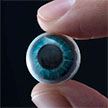 Ongoing smart contact lens research ranges from biosignal detection (intraocular pressure, glucose, cortisol) to therapeutic tools (aniridia, chronic ocular inflammation) and advanced features such as aumented reality displays and personalized designs using 3D-printing technology. Some of these technologies are already finding their way from the lab into commercial applications. The development of next-generation, smart contact lens technology is not just simply one field of bioelectronics but rather a complex, interdisciplinary effort that includes development of biocompatible materials; development of intuitive interfaces; and development of integration technologies capable of smart contact lens research.
Ongoing smart contact lens research ranges from biosignal detection (intraocular pressure, glucose, cortisol) to therapeutic tools (aniridia, chronic ocular inflammation) and advanced features such as aumented reality displays and personalized designs using 3D-printing technology. Some of these technologies are already finding their way from the lab into commercial applications. The development of next-generation, smart contact lens technology is not just simply one field of bioelectronics but rather a complex, interdisciplinary effort that includes development of biocompatible materials; development of intuitive interfaces; and development of integration technologies capable of smart contact lens research.
Apr 18th, 2022
 Researchers have designed a self-powered, 'one-terminal' tactile sensor that can distinguish various motions on a single electrode. They did this by using a thermoplastic polymer that can easily change the electrostatic signal in a selective area. The sensor array can perceive the position and the sequence of touches, shape of touching objects, and dynamic motions (sliding, rolling) of an object and can distinguish various motions on a single electrode.
Researchers have designed a self-powered, 'one-terminal' tactile sensor that can distinguish various motions on a single electrode. They did this by using a thermoplastic polymer that can easily change the electrostatic signal in a selective area. The sensor array can perceive the position and the sequence of touches, shape of touching objects, and dynamic motions (sliding, rolling) of an object and can distinguish various motions on a single electrode.
 Subscribe to our Nanotechnology Spotlight feed
Subscribe to our Nanotechnology Spotlight feed





